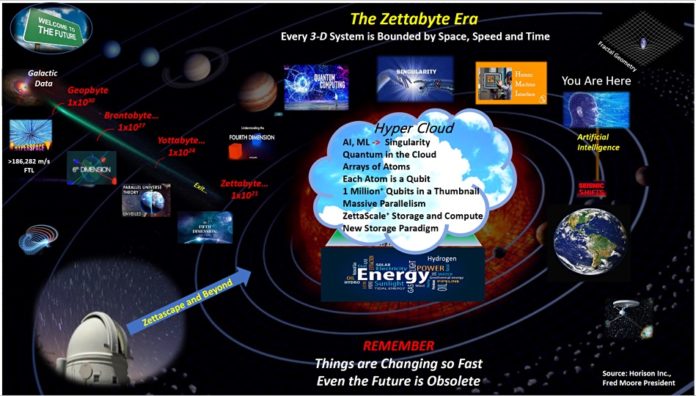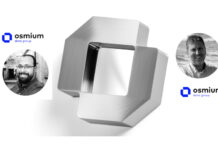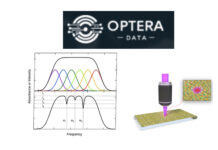Veteran storage analyst Fred Moore told a Fujifilm event audience that we’re entering a zettabyte era of data storage and archival storage will be the dominant technology by capacity.

The four-day Fujifilm 12th Annual Global IT Executive Summit took place in San Diego, June 22–25 and Moore, the president of Horison Information Strategies, presented there. He said that, by 2025, a projected 175ZB of data will be created, with ~11.7ZB actually stored. As an illustration, 1ZB – 1×1021 bytes, or a sextillion – would fill 55.36 million LTO-9 (18TB) cartridges or 50 million 20TB HDDs.
Moore said 80 percent of the 11.7ZB would be archived – roughly 9.3ZB – with active archiving becoming a de facto standard. Data moves into archival status when it is 90 to 120 days old and its probability of access sinks below 0.5 percent. Archival data has a general compound annual growth rate between 25 percent and 35 percent, and it is being amassed faster than it can be analyzed.
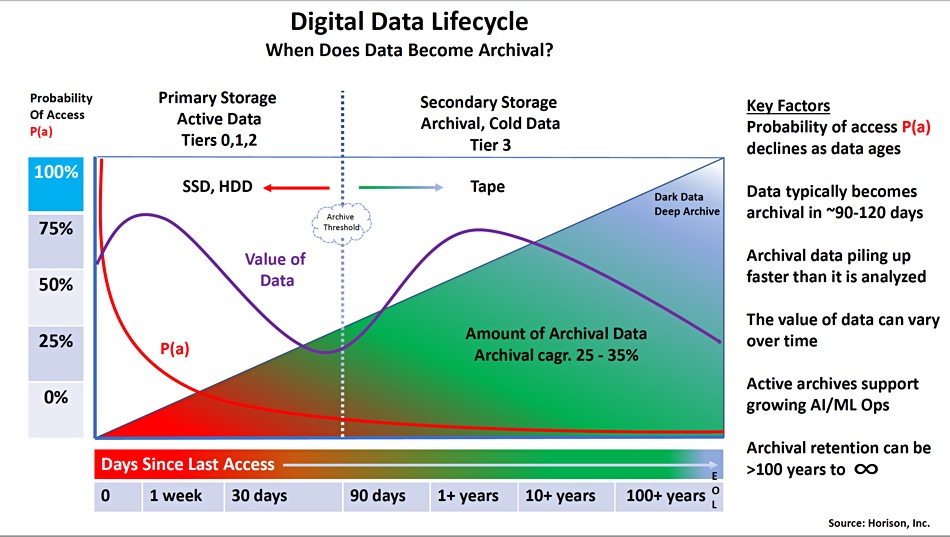
Moore believes this archival data pressure will prompt the arrival of a new storage tiering model:
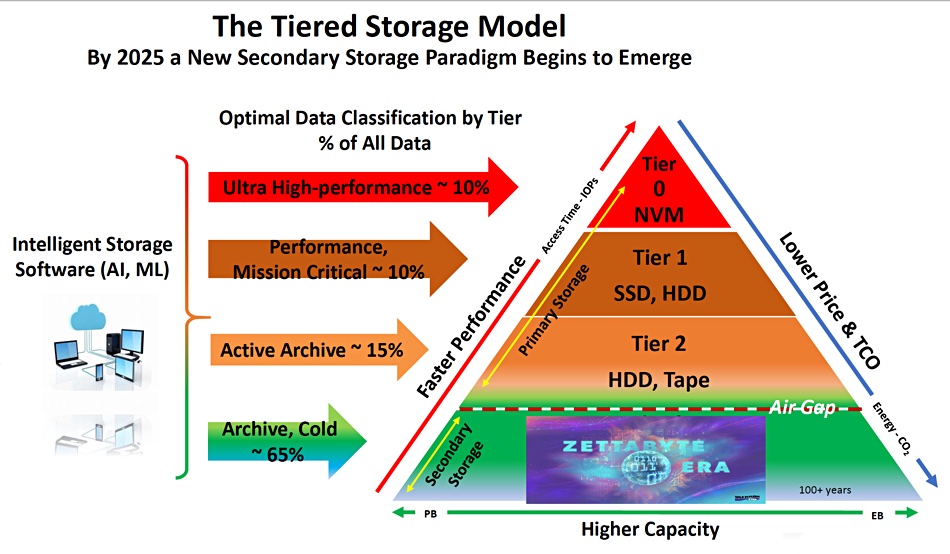
His graphic shows a four-tier model with two archive tiers: a front-end active archive using disk and tape, and a back-end using tape, which will have the slowest data access speed. Data access speed, storage cost and total cost of ownership (TCO) all go down as we move down the tiers.
But a subsequent chart shows an extra, third, archive tier – a deep archive:
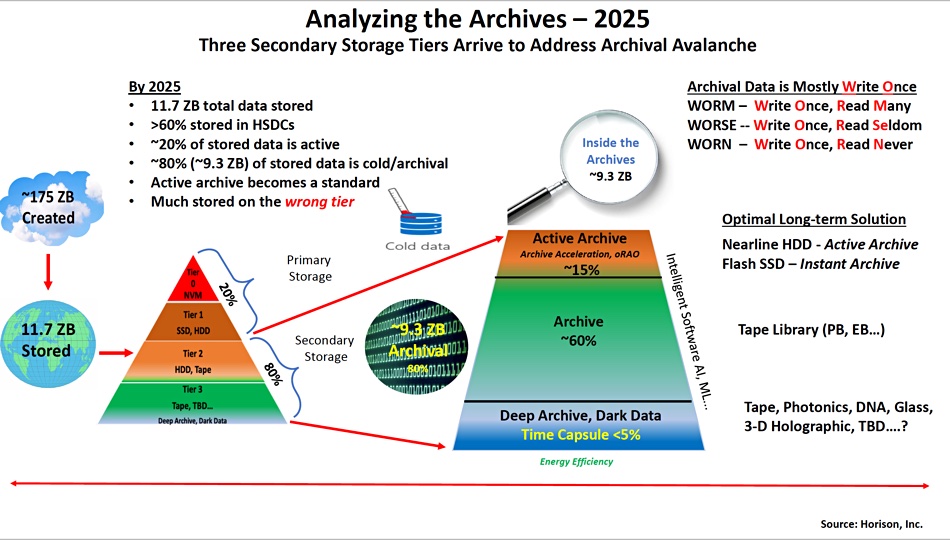
His chart shows the 80 percent of archive data divided between the three tiers with the individual percentages adding up to 80 percent. We calculate that the actual data split between the three archive tiers is about 19 percent in the active archive front end, around 75 percent in the standard archive and six percent in the deep archive, where the coldest data of all is stored, for up to 100 years or more.
The active archive uses SSDs for instant retrieval and nearline disks for slightly slower access. The standard archive tier will be a tape library. The deep and very long-lasting archive will use tape again or new technology – such as DNA storage, glass/photonics, 3D holography or some other emerging tech.
The standard access format for archive data will be, Moore thinks, S3 object storage with file format used for some data types.
Tape, Moore says, uses much less energy and has a much lower carbon footprint than HDDs – around 85 percent lower. Unlike with disk drives, you can add tape capacity (more cartridges) without increasing energy consumption, and tape has a clearer roadmap to higher capacities than disk.
In other words, for standard archives, for capacity, cost and environmental reasons, tape is king. It rules and will do so for a long time.


